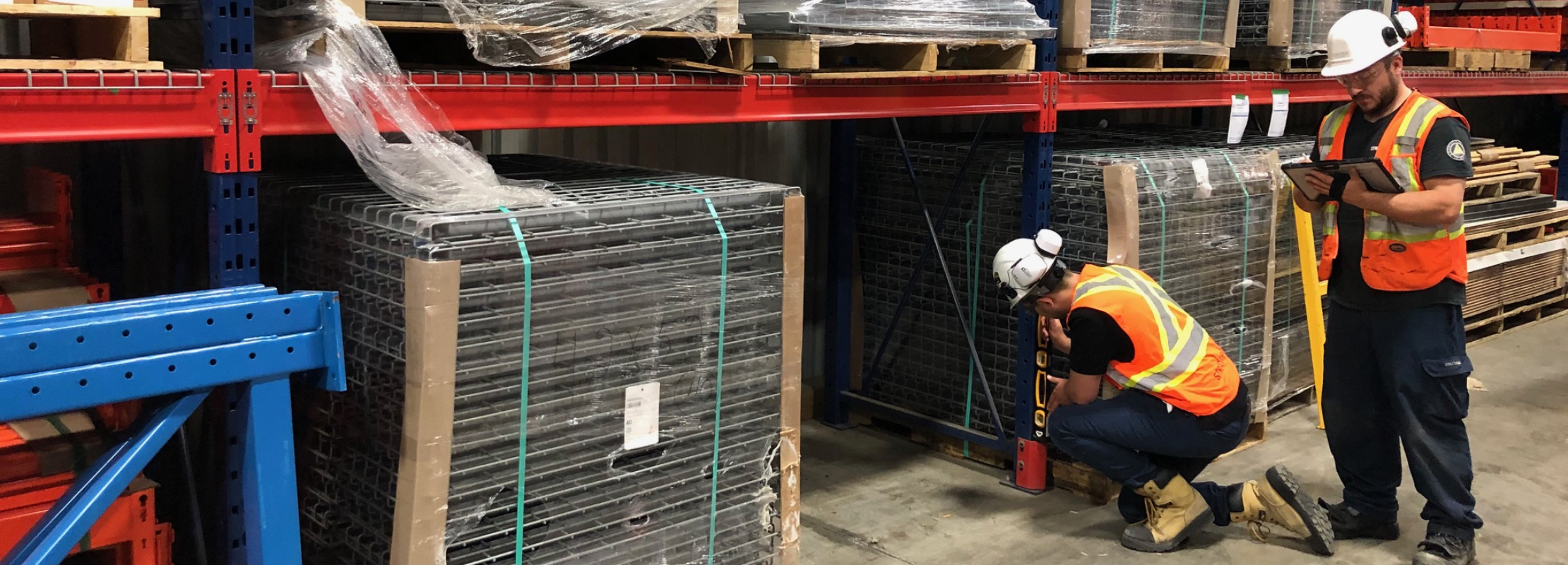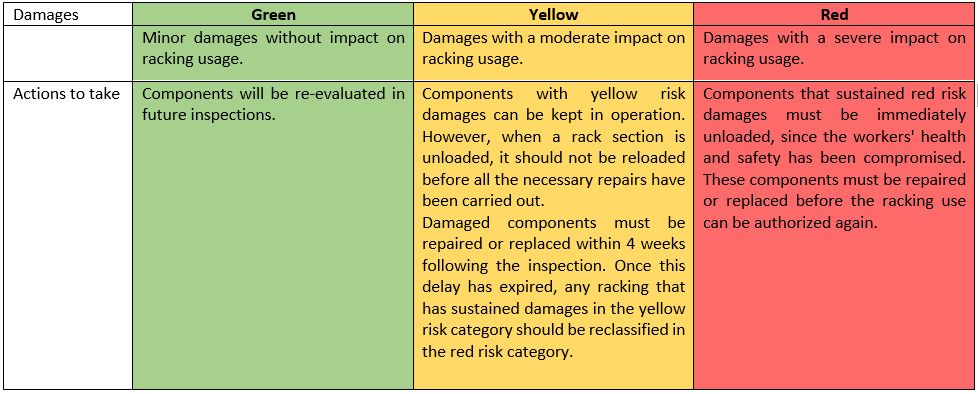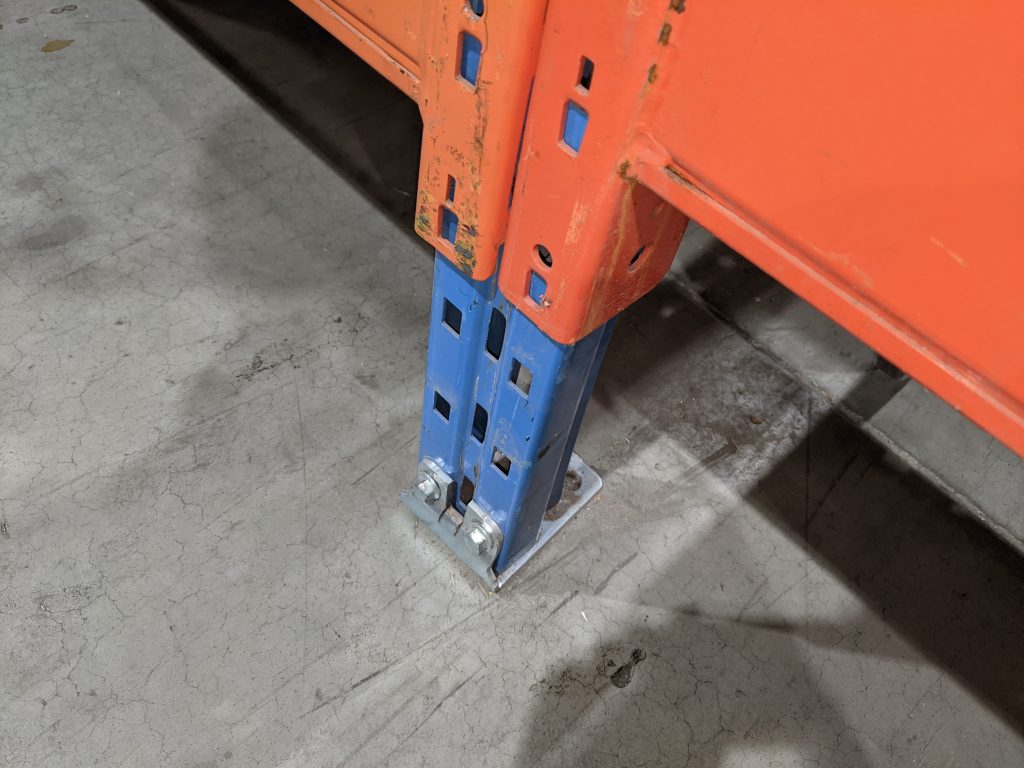
Let’s talk inspection!
Racking inspection is a process that allows to ensure the quality and condition of your storage systems. In-depth racking inspection makes it possible to list the components requiring repairs or replacement. This process is also necessary to determine your racking admissible load capacity. Each inspection must be supervised by an engineer and performed by specialists. During an in-depth inspection, inspectors visually inspect, and evaluate, each visible racking components. This type of inspection is much more comprehensive than a simple visual inspection. The in-depth inspection can identify damages and anomalies, but also operational problems existing in your warehouse.
Damages

Anomalies
Anomalies are not damages, but noteworthy findings. Anomalies can be grouped in 2 categories: non-urgent and urgent.
- Non-urgent anomalies: These anomalies usually require simple work and can be performed over a longer time. This type of anomaly is normally less expensive than urgent ones. Missing post protectors, missing end of aisle protection, surface corrosion or missing or non-conform capacity signs are frequent examples encountered during inspections.
- Urgent anomalies: These anomalies require work to be performed quickly following the inspection, since the workers’ health and safety may be compromised. The work required are usually more complex and more expensive than non-urgent anomalies. Missing safety bars, missing lock-pins, unanchored racking uprights, homemade modifications or severe corrosion are frequent examples noted during inspection mandates.

Admissible load capacity
Often, storage systems users do not know the loading capacity of their structures. The loading capacity is the maximum weight, per pallet or per bin, you can safely store in the storage systems. However, Canadian and Quebec standards are clear: racking end users must know and follow the loading capacity of their racking. On top of knowing and following the racking loading capacities, end users must clearly display the capacity so that it can be easily read by lift operators. End of aisle capacity plaques attached directly to racks are the easiest way to display the load-bearing capacity of racks.
Several elements influence the admissible load capacities: the quality of the steel used, the thickness of the components, the configuration of the system, as well as the type of components used are just a few examples. Our professional technologists and engineers are able to determine the permissible load capacities of your storage structures.
The inspection report
The inspection report includes all the elements noted during the inspection. A complete inspection report should contain at least 3 main categories: the authorized load-bearing capacities, the anomalies noted, and the damages noted. In addition, a plan of your warehouse with the bearing capacities of the racks should accompany the report.
- Authorized load capacities: In this section of the report, load-bearing capacities is detailed and explained. Sometimes, possible solutions to increase the load-bearing capacity can be mentioned if necessary. The calculation hypothesis should also be explained there.
- Noted anomalies: In this section, the anomalies are detailed and illustrated. The inspectors detail the nature of the anomaly, the severity of it and an idea of the work required to fix them.
- Noted damages: In this section, damaged components are grouped together and detailed. The damages are classified into 3 categories: green, yellow or red.
- The inspection drawing: This plan generally illustrates all the racks inspected and their bearing capacities. This plan should be drawn to scale. Any damages found during the inspection should also be on this drawing.
An inspection report should be signed by an engineer and the plans accompanying this report should be sealed by him. Pallet racks are complex structures. Alterations, changes to the layout or repairs should always be certified by an engineer. As a customer, do not be afraid to ask for your reports, plans or attestations signed by an engineer!
Do not hesitate to contact us to schedule your inspection!
